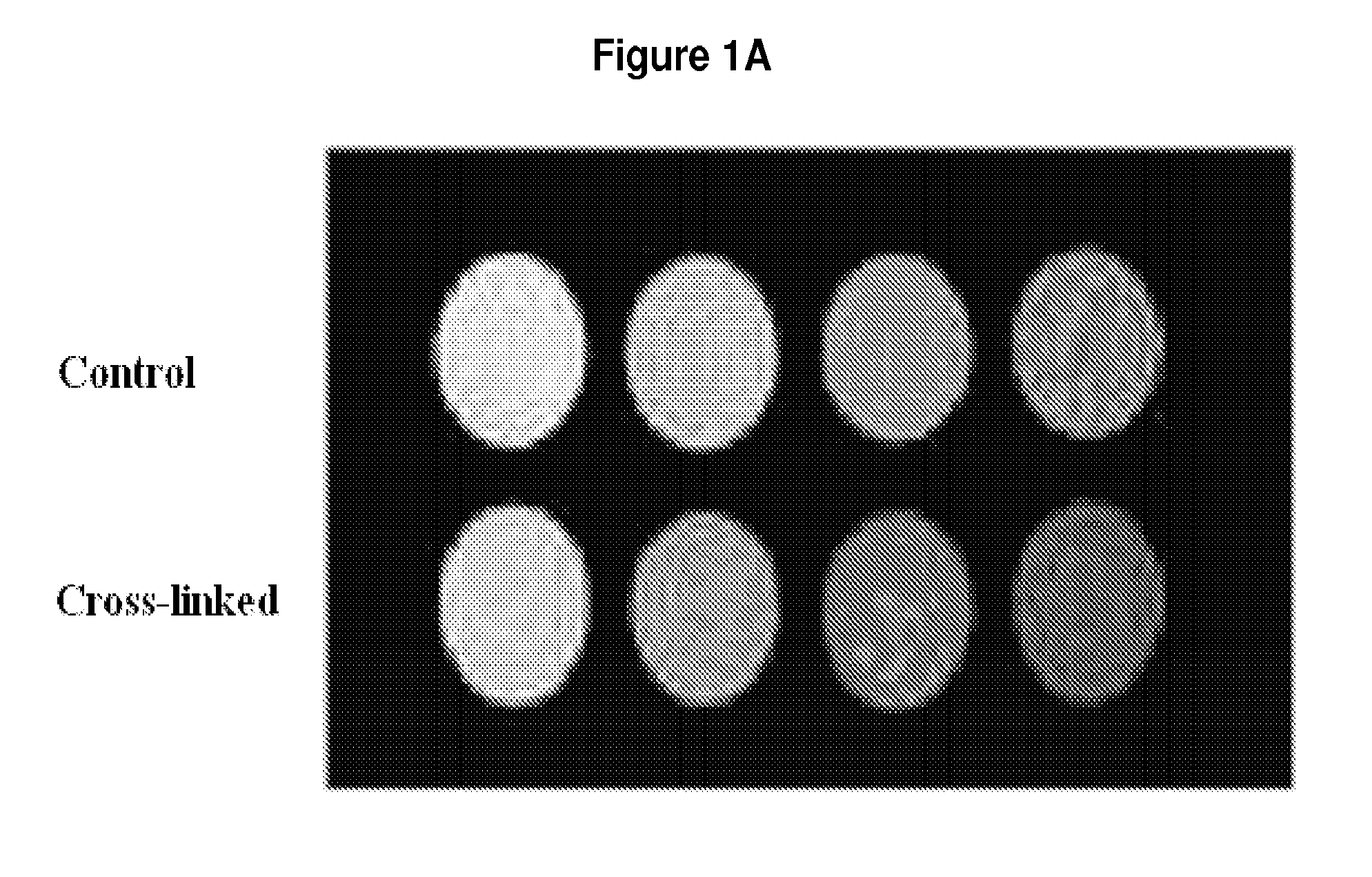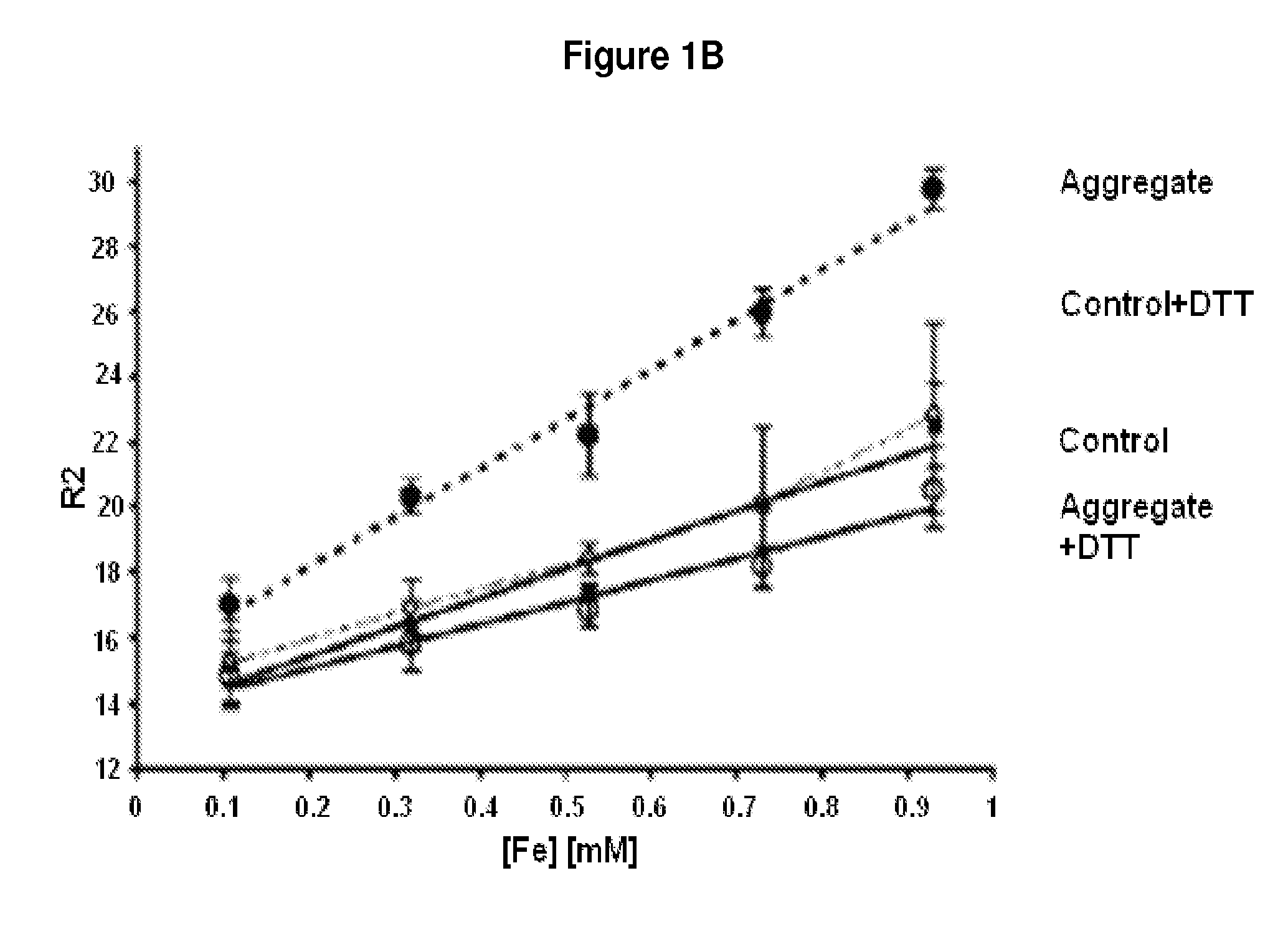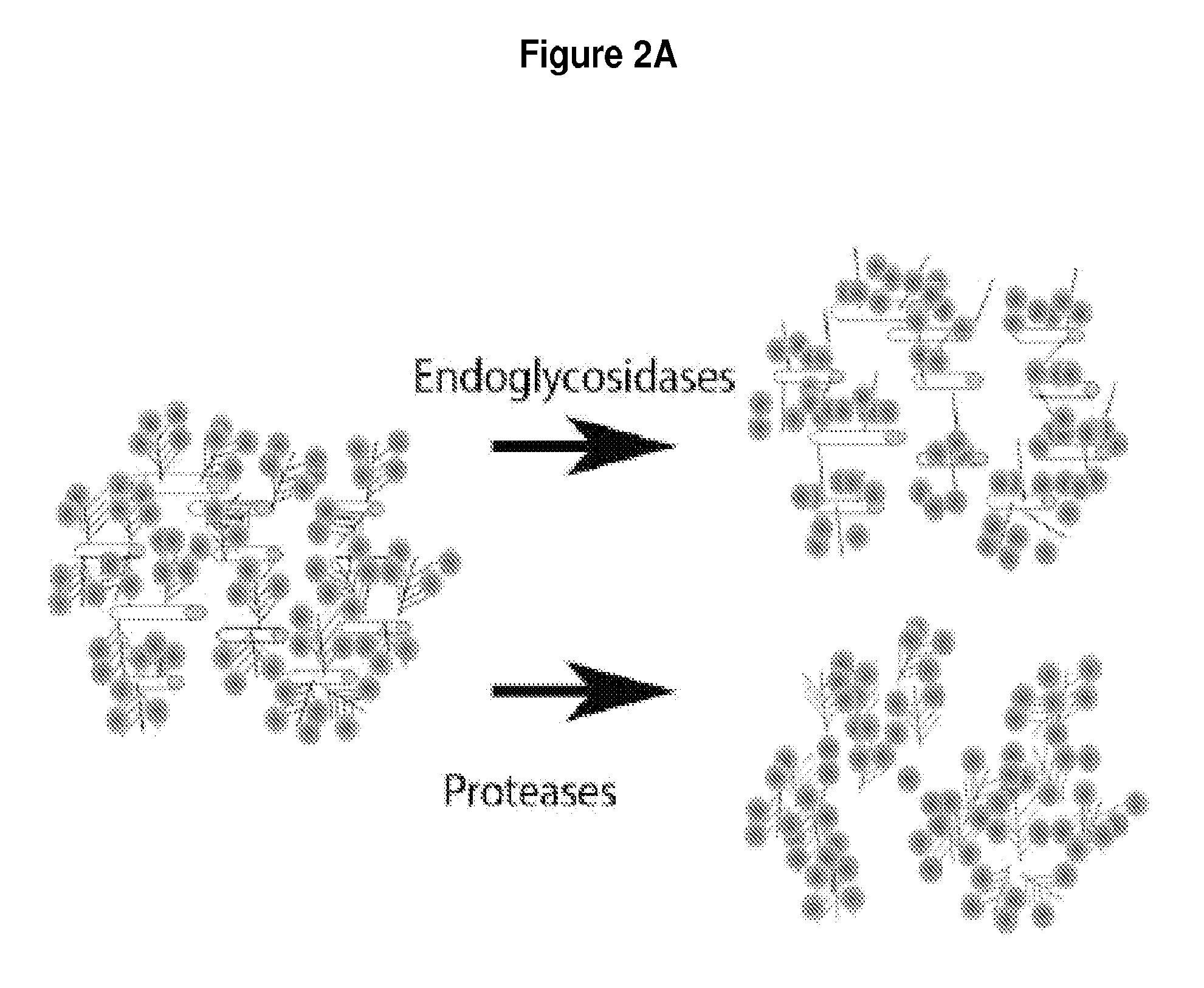Methods and Compositions Relating to Reporter Gels for Use in MRI Techniques
a reporter gel and gel technology, applied in the field of reporter gels for use in mri techniques, can solve the problems of difficult imaging at depths of over a few centimeters, difficult optical imaging, complex interaction of reporter gels with surrounding tissue, etc., and achieve the effect of increasing the rate of release of substan
- Summary
- Abstract
- Description
- Claims
- Application Information
AI Technical Summary
Benefits of technology
Problems solved by technology
Method used
Image
Examples
example 1
Materials and Methods for Making Functionalized Nanoparticles
[0066]Ferritin is an iron storage protein expressed by mammalian cells, and contains up to 4500 iron atoms in its core. Ferritin is advantageous as a contrast agent in this application because of its small size (13 nm), which allows it to be strategically bound at distances on the order of inter-molecular spacing inside a gel. Because the relaxivity of native ferritin is limited by the amount of iron deposited in the core, we will make “magnetoferritin,” with a modified protocol from that described previously [65-68].
[0067]Materials and Methods:
[0068]Magnetoferritin will be synthesized by adding iron chloride in a stepwise manner into a deaerated solution of apoferritin. 2 μM horse spleen apoferritin (Sigma Aldrich) in 0.05M MES buffer will be deaered with N2, by bubbling in the gas into the solution, apoferritin solution will be degassed for 15 minutes (pressure of 10 psi) before the first iron addition. Fe(II) Chloride w...
example 2
Materials and Methods for Creation of a Stable Line of DsRed-Expressing Cells
[0074]The dsred-express-c plasmid DNA vector was purchased from BD Biosciences. Competent e-coli were transformed with the plasmid, and were grown in Luria broth with 30 ug / ml Kanamycin for selection. The DNA was recovered by Midi-prep (Qiagen) and run on a 1% agarose gel at 75 V (with 10 ul ethidium bromide in 100 ml agar) for two hours to verify the DNA size using a UV light source. C6 glioma cells were purchased from the American Type Culture Collection and grown in DMEM-F12 medium supplemented with fetal bovine serum and Horse serum, and 10 mg / ml of penicillin and streptomycin, at 37° C. with 5% CO2. Cells were plated and grown overnight to approximately 70% confluence. The growth medium was then replaced by serum-free medium for transfection. 20 ul of Lipofectamine 2000 (Invitrogen) were incubated with 250 ul serum free medium for 5 minutes in an Eppendorf tube. In a separate Eppendorf tube, 20 ul of t...
example 3
Materials and Methods for Nuclear Magnetic Resonance and Magnetic Resonance Imaging
[0076]Nuclear magnetic resonance (NMR) and MRI will be performed to measure the static field susceptibilities and in vitro relaxivities of the reporter gels in vitro and in vivo. For in vitro experiments, a 400 MHz Varian NMR spectrometer with a 10 mm liquids probe will be used. To measure the relaxivity of MCF, MCF will be injected into a glass capillary and flame sealed. The capillary will be inserted into a volume of 10% D20 and 90% H2O. The D2O signal will be used for spin-locking, and the offset between the H2O1H main and secondary peaks will be computed, from which the static susceptibility of the sample will be determined. To measure the relaxivity of reporter gels before and after proteolytic degradation, 5 mm ID NMR tubes will be filled with 500 ml of each sample (containing 10% D2O) on ice and inserted into the NMR probehead and maintained at 35° C. to solidify the gel. The proton spectrum w...
PUM
| Property | Measurement | Unit |
|---|---|---|
| atomic numbers | aaaaa | aaaaa |
| atomic numbers | aaaaa | aaaaa |
| atomic numbers | aaaaa | aaaaa |
Abstract
Description
Claims
Application Information
 Login to View More
Login to View More - R&D
- Intellectual Property
- Life Sciences
- Materials
- Tech Scout
- Unparalleled Data Quality
- Higher Quality Content
- 60% Fewer Hallucinations
Browse by: Latest US Patents, China's latest patents, Technical Efficacy Thesaurus, Application Domain, Technology Topic, Popular Technical Reports.
© 2025 PatSnap. All rights reserved.Legal|Privacy policy|Modern Slavery Act Transparency Statement|Sitemap|About US| Contact US: help@patsnap.com



